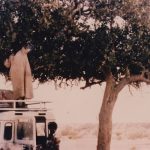Dobera roxburghii
Uses
Sudan: pulp of the fruit (drupe) of this tree is eaten. The seeds are also eaten, after debittering by boiling four times with continuous changes of water. They are then sun- dried and ground into flour used for making porridge; Kisra (a flat bread); and a perforated [pan?] cake [Gorasa?]. Sorghum or millet flour can be added, if available, to improve the taste of the flour. The whole seeds are also cooked and eaten with oil and salt.
Additional Information
- Name Authority:
- Planch.
- Misc:
- Chemical composition (undebittered): Protein (crude) = 19.0% (dry). Oil = 0.5% (dry). Ash = 6.4% (dry). Fibre (crude) = 2.6% (dry). Carbohydrate (soluble): starch = 55.7%(dry); (sugars): sucrose = 5.1% (dry). D-glucose = 3.0% (dry). D- fructose = 00.4% (dry). Amino acid (g [16g N ]-1): Aspartic acid = 9.2g. Threonine = 2.7g. Serine = 2.9g. Glutamic acid = 10.1g. Proline = 4.9g. Glycine = 3.6g. Alanine = 4.2g. Cysteine = 1.5g (performic acid oxidation). Methionine = 2.2g. (performic acid oxidation). Isoleucine = 3.2g. Leucine = 6.0g. Tyrosine = 2.8g. Phenylalanine = 4.1g. Histidine = 1.3g. Lysine = 3.4g. Arginine = 5.4g. Sulphur = 0.98% (dry). Potassium = 0.18% (dry). Magnesium = 0.47%(dry). Calcium = 0.53% (dry). Na = 0.02% (dry). K = 1.28% (dry). Zinc = 33mg/kg-1 (dry). Iron = 382mg/kg-1 (dry). Manganese = 334mg/kg-1 (dry). Coppper = 2mg/kg-1 (dry). (For values of debittered seeds, see Abdelmuti).
